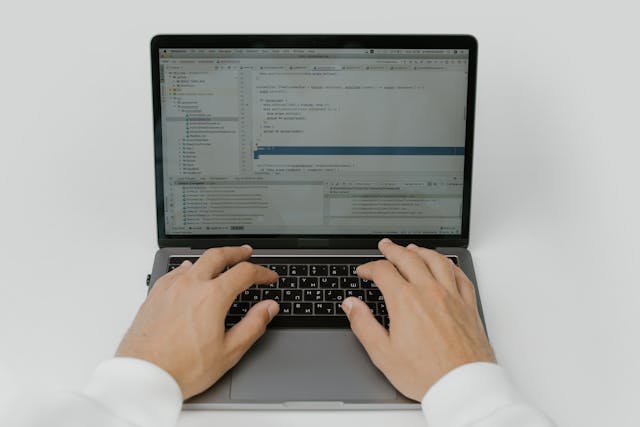Understanding progress notes in healthcare
Progress notes are vital in clinical documentation, capturing critical information about each patient encounter to ensure accurate and comprehensive medical records. They are central to documenting a patient's health history and supporting effective patient care across multiple visits.
These notes also have sensitive information and play an essential role in patient education by documenting discussions, differential diagnoses, instructions, and follow-up care, supporting patients in understanding their treatment and clinical status. For legal protection, progress notes provide a detailed record of therapy sessions, treatments, and decisions.
Tips for writing good progress notes
Several strategies are essential to produce highly effective progress notes:
- Stay objective: While some subjectivity is necessary to convey professional opinions, always support them with evidence. Keep language neutral and avoid any negative connotations to maintain a professional tone.
- Be thorough but concise: Include all essential information without overloading the document. Every sentence should add value, avoiding vague or repetitive wording. Aim for a maximum of two pages for easy readability.
- Ensure legibility: Clear writing is critical for handwritten notes to avoid miscommunication. Consider electronic note-taking to improve readability and accessibility.
- Maximize accessibility: Electronic health record (EHR) systems facilitate seamless care coordination and enable secure, efficient access for authorized healthcare providers.
Things to avoid when writing progress notes
Practical progress notes require meticulous attention and specific guidelines to avoid common errors compromising the patient's record of care:
- Missing dates and signatures: To maintain legal and insurance validity, each note should be dated and signed. When correcting errors, use a strike-through, date, and initial to uphold documentation integrity.
- Using medical jargon: Avoid complex terms and use straightforward language to ensure clarity for non-medical readers.
- Making unsupported assumptions: Provide evidence for all subjective opinions to maintain objectivity and prevent misinterpretation.
- Illegibility and gaps in documentation: Electronic systems can help prevent misunderstandings for those with unclear handwriting. Record all patient interactions, including telehealth, to ensure a complete medical history.
HIPAA compliance for secure progress notes
Maintaining patient privacy is paramount in healthcare. This includes personal details, medical history, and even treatment plan specifics.
Here are some key points to remember:
- Sharing PHI requires patient authorization, except in cases of potential harm.
- Patients have the right to access their progress notes.
- Progress notes should be professional and objective to protect confidentiality.
- HIPAA mandates staff training on compliance, with breaches risking fines, legal action, and reputational damage.
Progress notes in the digital age
Healthcare and medical documentation are evolving alongside technology. As digital tools become more sophisticated, their integration into healthcare offers significant advantages for patients and practitioners.
Electronic health records (EHR)
EHR systems are a cornerstone of modern healthcare IT. They enable practitioners to create and store progress notes electronically using secure, cloud-based technology. Here's what makes them valuable:
- Enhanced security: Controlled access, two-factor authentication, and encryption ensure data security.
- HIPAA compliance: EHR systems should be HIPAA-compliant, with robust protocols for data breaches. Evaluate security measures and breach response plans when choosing an EHR system.
- Improved access: Authorized users can access notes 24/7 from any device, facilitating collaboration and care coordination.
- Reduced errors: Digital text editors minimize typos and improve legibility compared to handwritten notes.
Why transition from handwritten to electronic
Handwritten notes are simple and provide a personal touch, making them appealing for practitioners used to traditional methods or working in low-tech environments. However, they have notable drawbacks:
- Misinterpretation risk: Handwritten notes can be difficult to read, leading to potential misinterpretation of critical patient information.
- Vulnerability to loss or damage: Paper records are susceptible to physical damage (e.g., fire, water) and can easily be lost, compromising patient information.
- Inefficient sharing: Sharing handwritten notes among multiple providers can be cumbersome, leading to delays in communication and coordinated care.
- Time-consuming: Writing notes by hand is generally slower than typing, which can hinder the efficiency of patient documentation and care.
- Limited searchability: Unlike electronic records, handwritten notes cannot be easily searched or indexed, making it harder to locate specific information quickly.
Different progress note formats
Effective therapy progress notes are essential for documenting patient care. These formats ensure all necessary information is systematically included in therapy progress notes.
SOAP
The SOAP format is the most widely used format for writing progress notes. It organizes patient encounter information into four categories of notes:
- Subjective (S): Captures the patient's feelings and symptom experiences, including onset, changes, and impacts on daily life, often supported by direct quotes.
- Objective (O): Contains factual data such as medical records, examination findings, test results, and vital signs, supporting the reported symptoms.
- Assessment (A): Combines subjective and objective information, reflecting the patient’s progress, current diagnosis, and tasks beneficial for the patient.
- Plan (P): Outlines the treatment course, detailing goals, adjustments, upcoming appointments, and referrals necessary for the patient's care.
BIRP
Commonly used other clinicians, in mental health, BIRP notes structure information into Behavior, Intervention, Response, and Plan sections, similar to SOAP note.
- Behavior (B): Records objective data and subjective information, including direct quotes and practitioner observations about the patient’s behavior and mood.
- Intervention (I): Summarizes the session, emphasizing therapeutic interventions and how they relate to the patient’s diagnosis and treatment objectives.
- Response (R): Documents the patient's reactions to interventions and strategies implemented during the therapy session.
- Plan (P): Concludes with details about the patient's next session, focusing on its objectives.
DAP
The DAP format simplifies the documentation process into three sections while ensuring thoroughness.
- Data (D): This data combination combines subjective and objective information, covering vital aspects discussed during the session, including symptoms and treatment responses.
- Assessment (A): This involves analyzing the data, providing insights into patient progress, treatment response, and possible diagnoses.
- Plan (P): Outlines future treatment plans, including session details, treatment goals, and any intervention modifications.
Difference between progress notes and psychotherapy notes
While both are clinical documentation forms, progress notes and psychotherapy progress notes serve unique roles in healthcare and mental health.
Progress notes
Created by healthcare providers, including doctors, nurses, and therapists, progress notes document the patient’s condition and their medical care:
- Subjective information: Patient's symptoms and concerns.
- Objective data: Vital signs, physical exams, treatments, and observable changes.
- Treatment plan and response: Updates on patient progress and response.
Progress notes facilitate communication among care teams, support legal and insurance needs, avoid confidentiality breaches, and comply with HIPAA to protect health information.
Psychotherapy notes
These notes, written by mental health professionals like psychologists or psychiatrists, focus on observations and insights from therapy sessions:
- Interpretative notes on the patient’s mental health, excluding detailed medical data.
- Kept confidential and separate from the main record, with access limited under specific legal circumstances.
Examples of excellent progress notes
Thorough documentation is essential for adequate, medical record documentation, and writing notes accurately can enhance the quality of a patient's chart.
Therapy progress note
- Subjective: “I feel like I am a failure at work. I work as hard as possible but have always been overlooked, and my self-confidence plummets. It's affecting how I am at home, and I'm beginning to feel miserable.”
- Objective: Thomas's expression was flat, and he remained slumped in his chair throughout the session, indicating low self-esteem, impairing his daily life.
- Assessment: This is Thomas's first session, and he needs strategies to communicate his emotions and realize his self-worth. Failure to do so may increase his depressive feelings.
- Plan: Thomas will attend further sessions focusing on self-perception and problem-solving skills at work. Alternative treatments will be discussed if symptoms do not improve within two weeks.
Psychology progress note
- Data: Luke reports being preoccupied with "what-ifs," which consumes hours and impacts his daily functioning. He notes decreased appetite, stating, “I don't eat much anymore, as I just don't get hungry.”
- Assessment: Luke's worsening symptoms indicate that the current treatment approach is ineffective. His anxiety, especially prolonged ruminations and decreased appetite, necessitates a revised treatment plan with focused interventions.
- Plan: In today’s session, we developed a meal plan for Luke to ensure proper nutrition. New anxiety management techniques, including breath control and mood regulation strategies, were introduced.
Physical therapy progress note
- Behavior: Jane displayed a positive attitude toward her prescribed physical therapy exercises. She reported mild to moderate pain in her left knee during flexion and extension. She walked with a slight limp and used a cane for support.
- Intervention: We conducted gentle range-of-motion exercises to improve knee flexibility and strength training for the quadriceps and hamstrings. A cold pack was applied post-exercise to manage swelling and pain.
- Response: Jane tolerated the exercises well but experienced increased pain during more intense strength training. She completed most exercises with encouragement, and the cold pack visibly reduced swelling, alleviating her pain.
- Plan: In the next session, we will maintain the exercise regimen, adjusting intensity based on Jane’s feedback. Low-impact aerobic activity will be introduced to enhance knee function and support weight management, which is critical for reducing stress on the knee.
Final thoughts
We’ve explored the essentials of progress notes and the benefits of integrating Electronic Health Record (EHR) systems to streamline healthcare documentation. For healthcare professionals, progress notes, including SOAP notes, therapy session documentation, and process notes, are crucial components of medical records. Thorough documentation of therapeutic interventions, such as detailed accounts of present illness, vital signs, and blood pressure, strengthens the accuracy of medical notes and supports effective treatment planning.
Electronic progress note systems offer substantial advantages, particularly in efficiently managing medical records and freeing up time for direct patient care. By transitioning to electronic medical notes, healthcare professionals can improve practice management, spending more time on patient interactions and delivering higher-quality care. EHR systems can simplify writing notes, organizing psychotherapy notes, and incorporating occupational therapy details.
Further reading
If you’re interested in furthering your knowledge of how progress notes fit into the broader healthcare system, we’ve found a selection of links that can help:
- Digital solutions for clinical documentation
- Sample progress note templates in PDF
- Common questions about psychotherapy notes and their answers
- Tips for effective SOAP notes
- Make sure your clinical documentation is on time and legible
- Record keeping guidelines
- Guide to privacy and security of electronic health information
- State attorneys general
- CMS HIPAA basics for providers




.jpg)

.jpg)









.jpg)
.jpg)

.jpg)




.jpg)

.jpg)